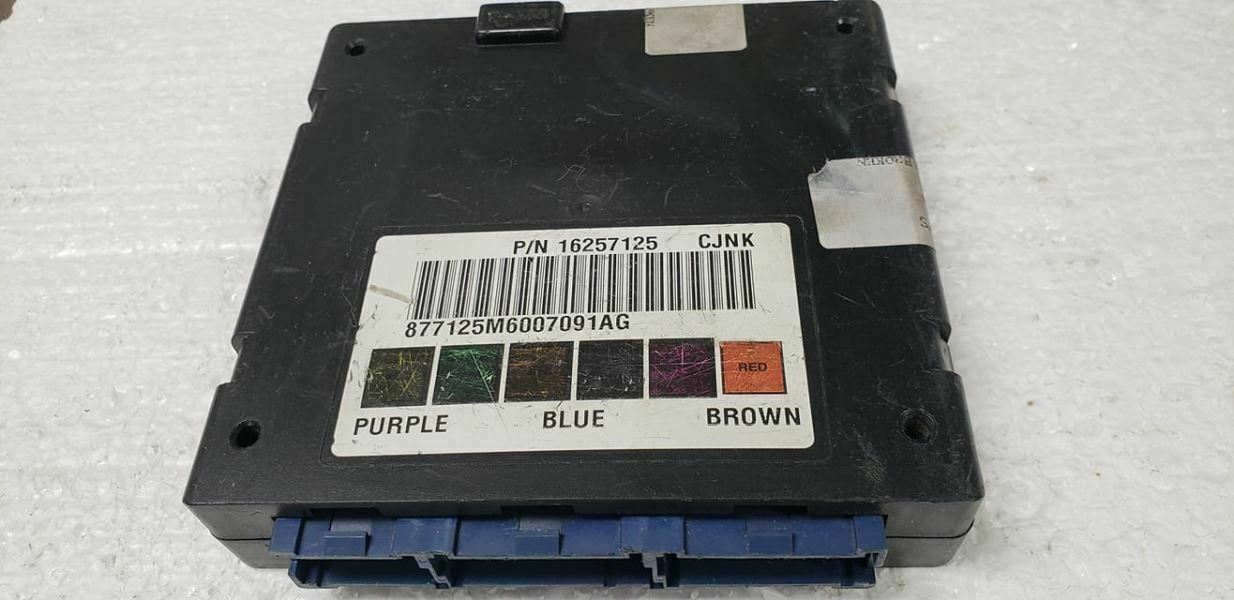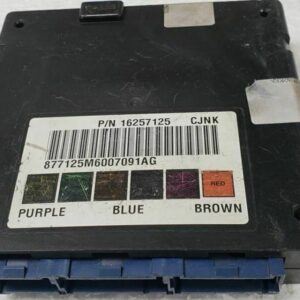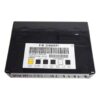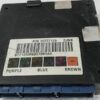If you’re battling bizarre electrical issues in your GM truck or SUV—like flickering interior lights, a security system that acts up, or power windows with a mind of their own—you’ve likely met the frustrating reality of a failing Body Control Module (BCM). As the central hub for your vehicle’s body electronics, when the BCM starts to go, it can create a cascade of confusing and intermittent problems that are a nightmare to diagnose. This isn’t just an annoyance; it can affect vehicle security and function.
This is the definitive, hassle-free solution. We offer a replacement Body Control Module, part number 16257125, that arrives at your door ready for installation. The biggest hurdle with replacing a BCM is the need for expensive, dealer-level programming. We eliminate that step entirely. Simply provide us with your vehicle’s VIN during checkout, and our technicians will flash the module with the latest official GM software specific to your truck or SUV. This ensures seamless integration and restores all functions as the factory intended.
Case Study: A Tricky Diagnosis
I remember a 2000 Silverado 1500 that came into my shop with the classic ‘electrical gremlins.’ The customer had replaced the battery and alternator, but the dome lights would randomly stay on, draining the battery overnight, and the power locks worked only half the time. After checking grounds and wiring for hours, we hooked up a high-level scanner and saw communication loss codes (U-codes) pointing to the BCM. A replacement module, correctly programmed to the VIN, solved every single issue in under an hour. This is why a pre-programmed module is such a game-changer for both pros and DIYers—it turns a potentially complex electronic repair into a straightforward parts swap.
Is Your Vehicle Showing These Symptoms?
A faulty BCM can manifest in numerous ways. If you’re experiencing any of the following, this module is the most likely solution:
- ✔ Erratic or non-functional interior/exterior lights (dome lights, headlights).
- ✔ Power windows, door locks, or mirrors operating intermittently or not at all.
- ✔ The security system or alarm randomly activating or preventing the vehicle from starting.
- ✔ Horn not working or sounding off unexpectedly.
- ✔ Dashboard warning lights that have no apparent cause.
- ✔ Communication error codes (U-codes) stored in the system when scanned.
A Straightforward Guide to Installation
Replacing your BCM is a manageable job for a confident DIYer. While the exact location varies slightly by model (see fitment list), the process is generally similar. Always consult a service manual for your specific vehicle.
- Safety First: Disconnect the negative terminal from your vehicle’s battery to prevent any electrical shorts.
- Locate the BCM: On most trucks like the Silverado/Sierra, it’s located on the driver’s side of the dashboard. On S10/Blazer models, it’s often behind the center dash. It’s a black plastic box with multiple wiring harnesses connected to it.
- Remove Connectors: Carefully unplug all electrical connectors from the old BCM. They have locking tabs that need to be depressed. Do not force them.
- Unbolt the Module: Remove the bolts or nuts holding the BCM bracket in place and carefully pull the old module out.
- Install the New BCM: Mount your new, pre-programmed BCM in the same location and secure it. Reconnect all wiring harnesses, ensuring each one clicks firmly into place.
- Reconnect Battery: Reattach the negative battery terminal. The initial installation is now complete.
Important Post-Installation Steps
Because this Programmed GM BCM is tailored to your vehicle, most functions will work immediately. However, for safety systems, a ‘handshake’ with other modules may be required:
- ✔ Airbag System Sync: If your airbag warning light is on after installation, a professional scan tool is needed to perform the ‘Setup SDM Primary Key in BCM’ procedure. This syncs the new BCM with the airbag system.
- ✔ Brake Pedal Position Relearn: Some models may require a brake pedal position sensor recalibration to ensure brake lights and traction control work correctly. This also typically requires a diagnostic tool.
Disclaimer: Always consult a factory service manual or a qualified technician for vehicle-specific procedures.
Verified Vehicle Compatibility
This module is a direct replacement for part number 16257125 and other interchangeable numbers. It is guaranteed to fit the following vehicles:
- Astro Van: 2000 (LH dash)
- Blazer S10 / Jimmy S15: 1998-2000 (center dash, ID 16257125)
- Bravada: 1998 (center dash, w/ extended build date opt ZN4)
- Isuzu Hombre: 1999-2000 (LH dash)
- S10 / S15 / Sonoma Pickup: 1998-2000 (center dash, ID 16257125)
- Safari (GMC): 2000 (LH dash)
- Sierra / Silverado 1500 & 2500: 1999-2000 (LH dash)
Why do I need to provide my VIN?
Why do I need to provide my VIN?
Your VIN is essential because it allows our technicians to program the BCM with the exact software and settings for your vehicle’s specific options and features. This ensures 100% compatibility and avoids the need for a costly trip to the dealership for programming.
Is this a plug-and-play part?
Yes, for the most part. Because we pre-program it, the physical installation is plug-and-play. However, as noted, some vehicles may require a simple relearn procedure for the airbag or brake systems, which requires a professional scan tool.
Do I have to return my old BCM?
No. This purchase comes with no core charge. You can keep your original module, saving you the time and expense of shipping it back.
What tools are needed for the post-install procedures?
The Airbag System Sync and Brake Pedal Position Relearn procedures require a bi-directional diagnostic scan tool, such as a Tech 2 or equivalent professional-grade scanner. Most basic code readers cannot perform these functions.
Will this fix my check engine light?
Generally, the BCM does not control engine functions; that is the job of the Engine Control Module (ECM/PCM). A faulty BCM typically causes issues with body electronics like lights, locks, and security, not the check engine light.



